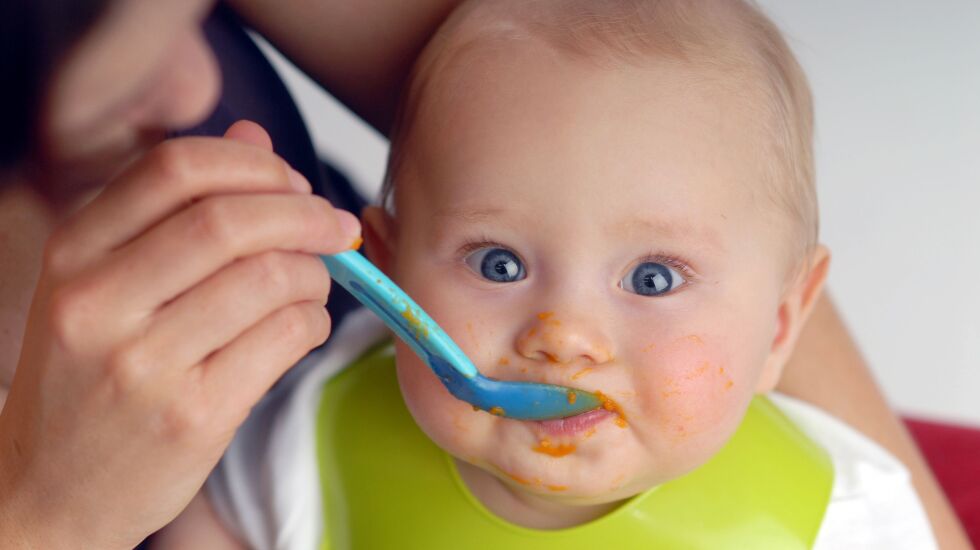
The Food and Drug Administration on Tuesday released a draft regulating proposed allowable lead levels in processed foods for babies and children under two years of age.
The proposed action levels — which are not legally set limits, but could lead to FDA enforcement action — would result in reduced exposures to lead and lessen potential health effects for babies and toddlers at ages when their brains are still developing, the agency said.
“For babies and young children who eat the foods covered in today’s draft guidance, the FDA estimates that these action levels could result in as much as a 24% to 27% reduction in exposure to lead from these foods,” said FDA Commissioner Robert Califf in the announcement.
Wait, there’s lead in baby food?
Past studies have found levels of lead, arsenic and other heavy metals in popular baby foods. A study conducted for the Healthy Babies Bright Futures organization tested 168 baby foods from 61 brands — among them Gerber, Up&Up, Parent’s Choice, Similac and Enfamil — found that 95% of baby foods tested were contaminated with one or more toxic heavy metals.
Lead, arsenic cadmium and mercury — metals that the FDA considers harmful — can remain in the environment for decades from past pesticide and herbicide use, Michael Hansen, a senior staff scientist with Consumer Reports, told a U.S. House subcommittee looking into the issue in 2021.
How much lead would be allowed in processed baby food?
The processed foods covered by the draft proposal, entitled Action Levels for Lead in Food Intended for Babies and Young Children, includes foods in jars, pouches, tubs and boxes and intended for babies and young children less than 2 years old.
Proposed action levels:
- Fruits, vegetables, mixtures, yogurts, custards/puddings and single-ingredient meats: 10 parts per billion (ppb).
- Single-ingredient root vegetable foods: 20 ppb for root vegetables (single ingredient).
- Dry infant cereals: 20 ppb.
FDA research found many fruits, vegetables and mixtures studied have lead levels of about 1-3 ppb, but some had as much as 11.1 ppb. Single root vegetable foods were about 8.5, but went as high as 25.7 ppb. Dry infant cereals averaged about 8.3, with some as high as 23 ppb.
The agency will take public comment for 60 days before beginning work on a final version of the proposal.
One food category the agency decided not to address lead levels in was grain-based snacks including teething biscuits and rice-based puffs. They were analyzed but the FDA is seeking additional information on levels for those foods, the proposal said.
Those foods are high in lead and arsenic and they need acceptable levels, too, said Tom Neltner, senior director for safer chemicals at the Environmental Defense Fund. “It may have been they weren’t sure how much of a biscuit a kid actually eats, or the contribution to the diet may be small,” he said.
As for the other levels, he supports the FDA’s action as the levels are below those set by Europe. “They are the most protective in the world,” Neltner said.
Parents worried about lead in baby food face a dilemma because homemade baby food will also have heavy metals, he said.
“We think most of the sources of [lead] are contamination, but there are ways to reduce it,” Neltner said. “These standards are important to getting us there. I think it’s progress.”
Contributing: Associated Press







